Replace EtherCAT Drive for AZ or EL¶
This guide will only cover the replacement from the software point of view, the electrical and mechanical parts are not part of this guide.
Once the new drive is mounted and electrically connected to the rest of the EtherCAT line, the steps listed below must be followed:
Open the
MainAxesPXI.lvprojLabVIEW project, located here. It should look something like this, see image below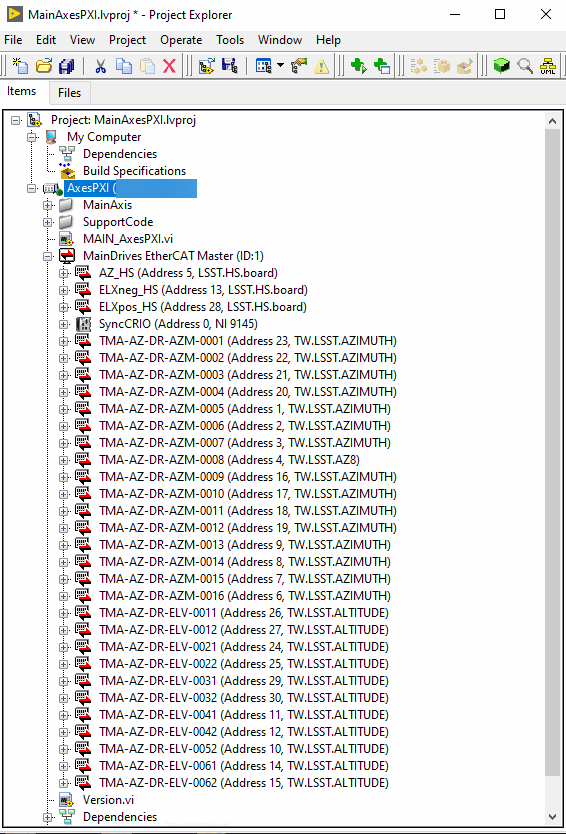
Delete the replaced drive from the project
Copy the name of the replaced drive and note it somewhere, it will be required in a future step
Select the replaced drive in teh LabVIEW project and press supr key on the keyboard
Connect to the AXES PXI
Make sure that the IP from the project corresponds to the one for the AXES PXI on the TMA.
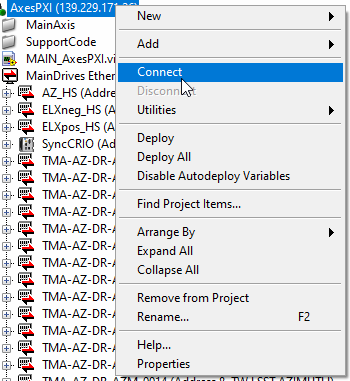
Add the new drive to the LabVIEW project
Right click on the ethercat master,
MainDrives EtherCAT Master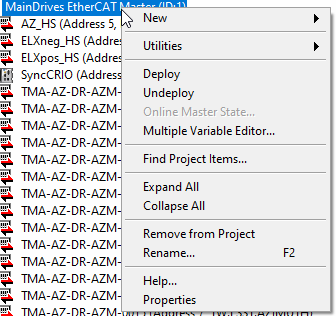
Select New > Targets and Devices…

On the new window, called Add Targets and Devices, expand the ethercat master and select the slave that is missing in the project and press OK. This will add the device to the project, but with an incorrect name.
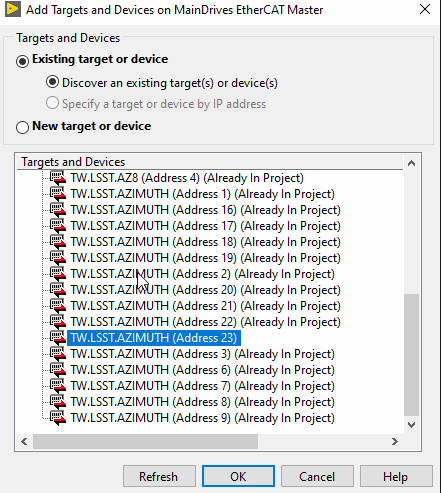
Rename the newly added
Deviceto the stored name from the delete slave step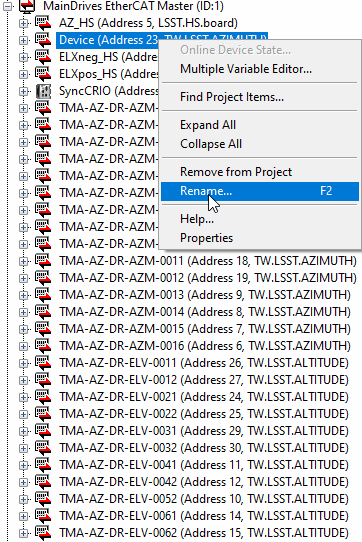
Check the serial number from the new drive and the data stored in the project
Right click on the new drive and select
Online Device State...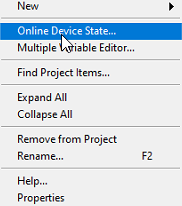
On the new window, go to Parameters and expand the Identity Object.
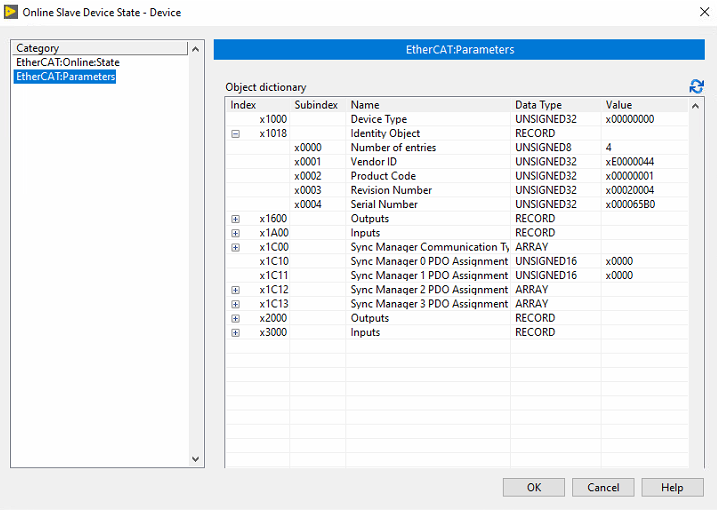
Note the Revision Number and Serial Number
Close the pop up window
On the LabVIEW project, right click on the new drive and select Properties

On the new window, check that the contents of the General view matches the previously noted Revision Number and Serial Number
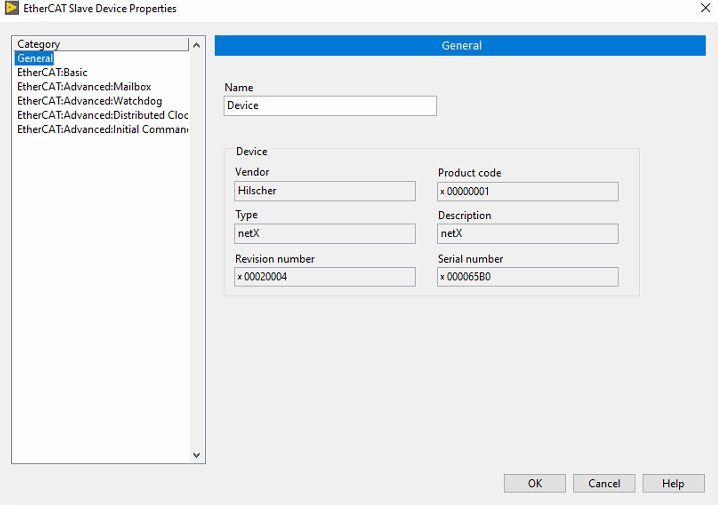
If they match move on, if not, close the LabVIEW project and edit it in text mode to make the revision/serial number match. If by doing this the project marks the new slave as unknown, a new XML must be created with the right revision/serial for the new drive. For doing this, take the existing XML, create a new copy and edit the required parameter to match the one taken from the slave in the Identity Object page.
Once the configuration in the project is okay, the new master configuration can be deployed onto the PXI
Right click on the
MainDrives EtherCAT Masterand select Deploy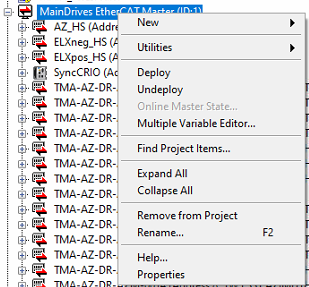
When deploying, it si likely that a conflict resolution pop up will appear. Before clicking apply, make sure the conflict solution is set to an option that leaves the scan engine in active as the last step.

Then a progress pop up will appear and if there is no problem while deploying, the new slave should be properly working
Check the ethercat is running, this can be done from the EUI ethercat management window or from the NI Distributed System Manager
-
Navigate to the corresponding window in the TMA EUI
Check that all the slaves for the AXES PXI are in OP state and that the master is in active state
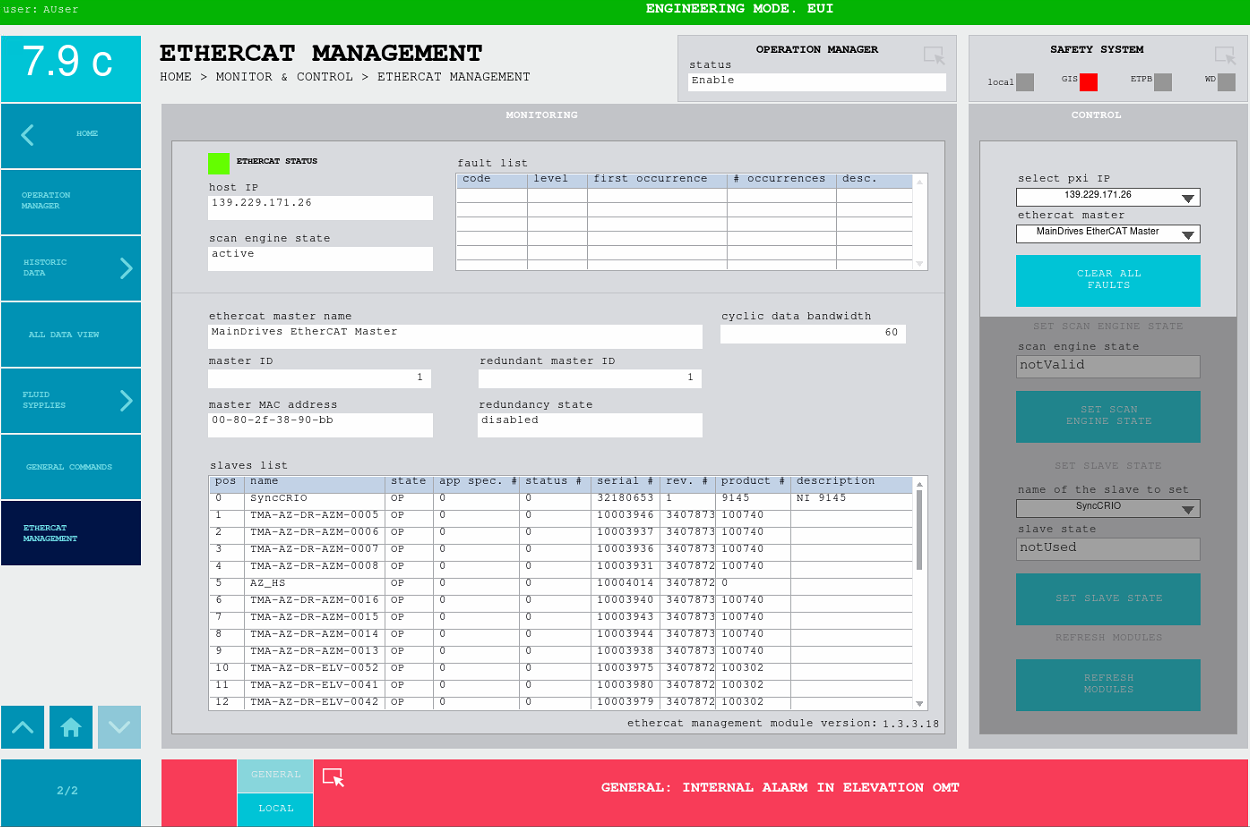
NI Distributed System Manager
launch the app on a windows computer that has access to the TMA AXES PXI
expand the
MainDrives EtherCAT Masterexpand a couple of slaves
check that the variables are being updated

-
Troubleshooting¶
Ethercat master deployment error -> LabVIEW: (Hex 0x80DF0002) A file I/O error occurred¶
This error occurs when for some reason the deployment process gets corrupted.
This can be fixed by removing the .xml files from the PXI, this can be done as follows:
SSH into the AXES PXI
go to the directory where the XML files are stored ->
cd /var/local/natinst/deployfwk/config/remove the XML files ->
rm *.xmlTry deploying the ethercat master from the project again